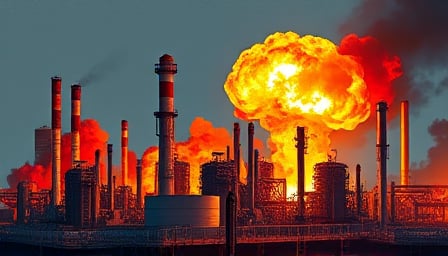Eneos’ Kawasaki Unit Grounds to a Halt: What’s Behind the Unplanned Shutdown?
Eneos, Japan’s beleaguered energy giant, has just suffered a major blow with an unplanned shutdown at its 77,000-bpd unit in Kawasaki. The incident, reported on June 5, raises serious questions about the company’s operational reliability and its ability to meet growing demand.
The shutdown is a stark reminder of the company’s struggles to maintain a stable production level. With the global energy landscape shifting rapidly, Eneos can ill afford such disruptions. The company’s stock price has been on a wild ride over the past year, reaching a 52-week high of ¥865.9 in July 2024 and a low of ¥589 in August 2024. The current price of ¥726.4 is a far cry from its peak, and investors are right to be concerned.
But what’s behind the company’s valuation woes? A closer look at the numbers reveals a complex picture. The price-to-earnings ratio stands at a staggering -168.14, while the price-to-book ratio is a relatively modest 0.63176. This suggests that investors are either extremely optimistic or woefully misinformed about the company’s prospects.
Here are the key takeaways from Eneos’ recent performance:
- Unplanned shutdowns are a major concern: The Kawasaki unit’s shutdown is a clear indication of the company’s operational challenges.
- Valuation is a mystery: The company’s price-to-earnings ratio is deeply negative, while the price-to-book ratio is relatively low.
- Investors are taking a risk: With the company’s stock price fluctuating wildly, investors are either betting on a turnaround or writing off the company’s prospects altogether.
One thing is certain: Eneos’ recent performance is a wake-up call for investors and analysts alike. The company’s struggles to maintain a stable production level and its complex valuation picture make it a high-risk, high-reward play. Will investors take a chance on Eneos, or will they steer clear of this troubled energy giant? Only time will tell.
